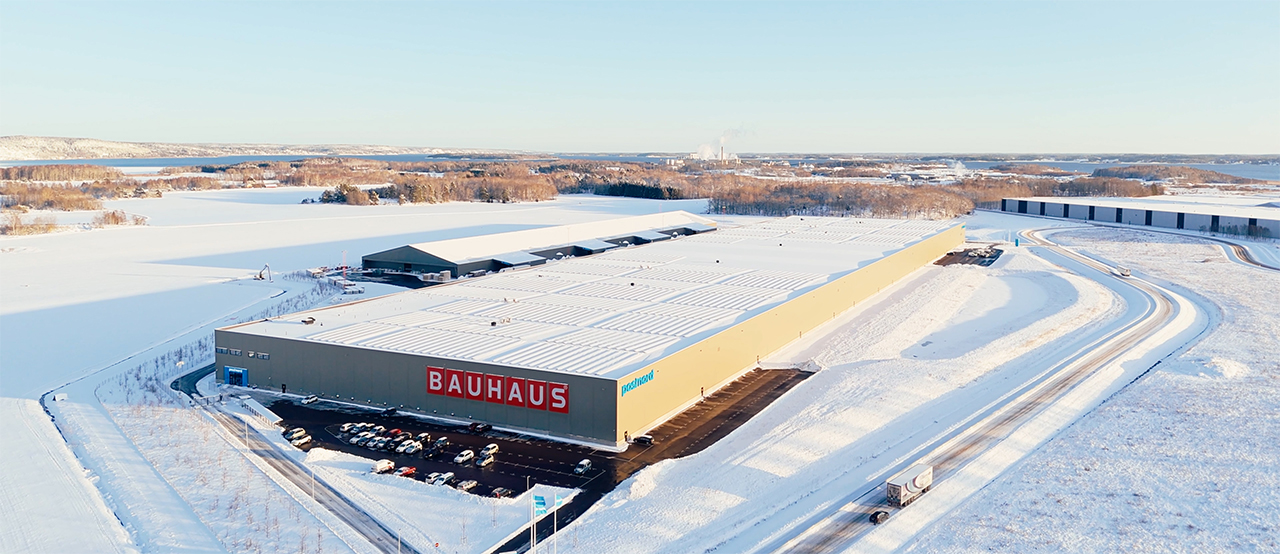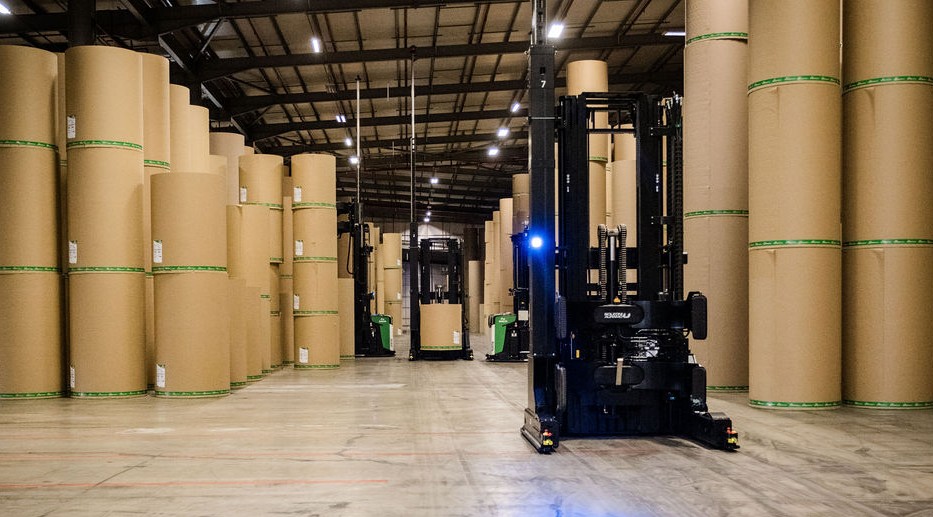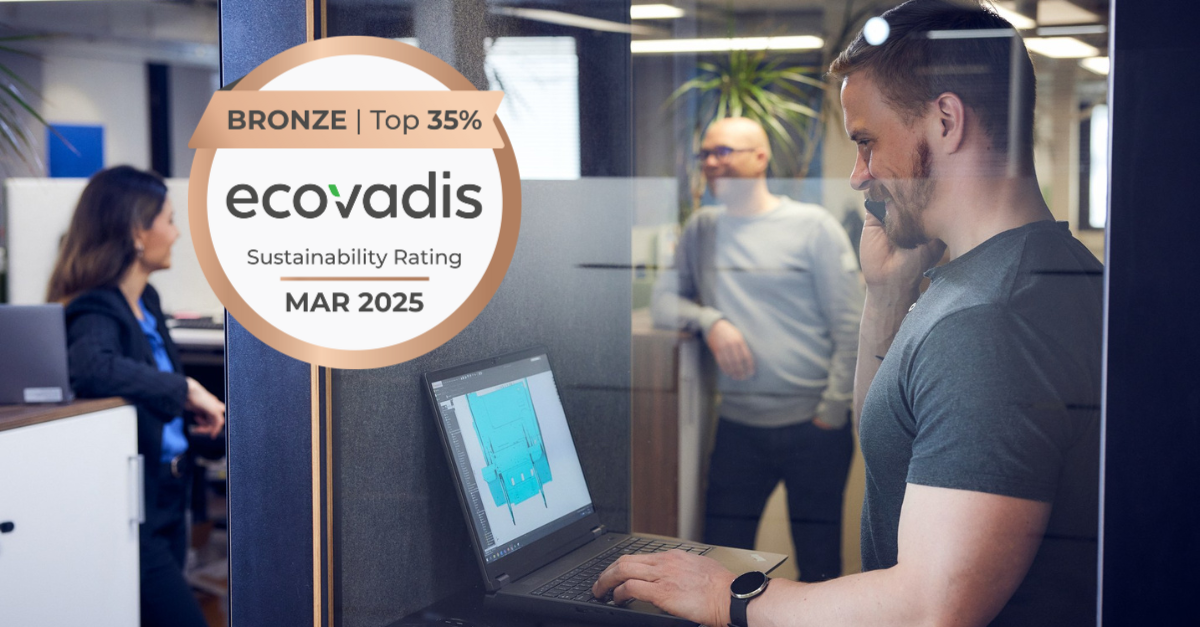POSTNORD TPL: Meeting the sustainability targets with automated waste management
In 2021, PostNord TPL had the opportunity to design a brand-new logistics center facility. In addition to solution efficiency, safety and user-friendliness, they set a target for high sustainability levels. To reach these goals, selected warehouse processes were decided to be automated. A project to automate waste management was started in 2022, and it combined the excellence of the partnering companies into one functional and clever solution.
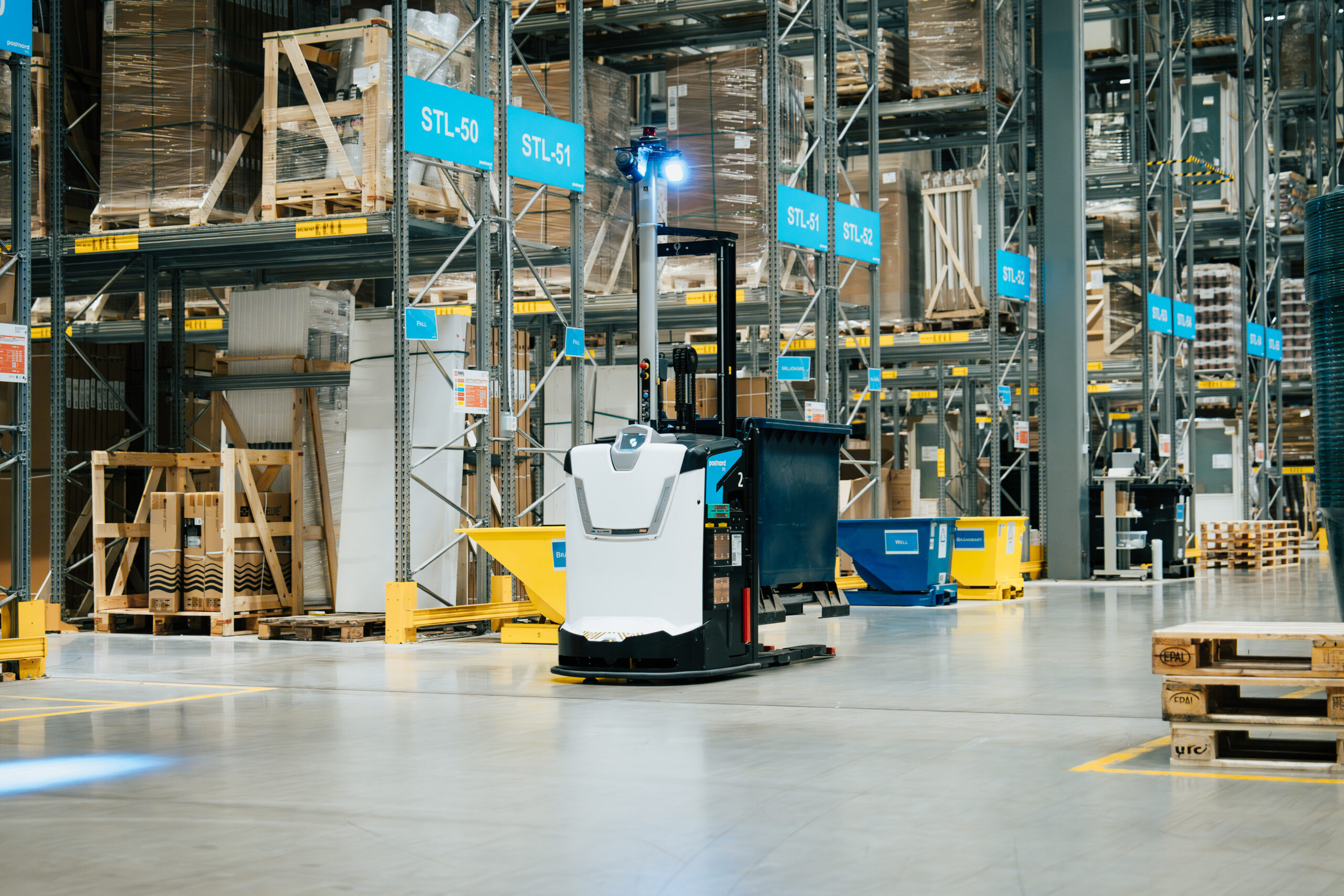
Postnord TPL offers complete logistics solutions within the Nordic region. The distribution centre in Malmölandet, Norrköping, Sweden, is a brand-new Logistic Center for Bauhaus Nordic operations introduced in 2022. It supplies 27 Bauhaus stores and e-commerce. As warehouse operations create large quantities of recyclable waste, PostNord TPL wanted to find an automated solution to minimise the human resources needed for waste management and meet their sustainability targets. Rocla AGV Solutions and Europress, a leading manufacturer of waste compactors in northern Europe, combined their know-how and started to develop a solution to meet PostNord TPL’s needs in cooperation.
Solution specifications:
- Warehouse size: 90 000 m2 including 10 000 m2 mezzanine and 20 000 m2 tent
- AGV fleet size: 6 stacker-type vehicles with Li-ion batteries
- Operative scope was to automate supporting material flows without the need to integrate into the host system:
– Emptying waste containers of different fractions
– Receiving and intermediate storing of empty gitterbox stacks
– Empty pallet stack transports and intermediate storing
– Empty gitterbox infeed for picking areas on both the first floor and elevator infeed for the mezzanine floor - The operative target of the first phase: improve efficiency, meet sustainability targets and minimise the operators’ need for manual operations with these transportation needs
Meeting the sustainability targets was an important goal. To make waste management a working long-term solution, it must also be easy for the staff. Automation was considered an efficient solution to make the processing of waste fractions as simple as possible so that it would not burden the employees. In addition to waste handling, PostNord TPL also set about replacing unnecessary packaging using metal gitterboxes where feasible.

“According to our sustainability agenda, the target for packaging is to have as low impact on the environment as possible. We have automated our waste handling to make it as simple as possible for our operators. And we have removed unnecessary packaging by using metal gitterboxes,” says Johannes Algotsson, Logistics developer at PostNord TPL.
Key benefits:
- Efficiency: 100-200 weekly waste tippings; pickers can focus on picking.
- Time savings: One emptying cycle takes roughly 12-15 minutes; if a person were doing 100 containers per week, approximately 1,000 minutes of somebody’s time per week would be saved.
- Cost savings: Human resources can be used where they add more value.
- Safety and ergonomics: Automatised moving of the waste containers and emptying them into the compactor in a dedicated restricted area increases the safety of human operators. Gitterboxes are easy to handle and fold, and AGVs handle the moving.
- Sustainability: Since gitterboxes are foldable, they save space when empty. Also, they are reusable and designed to circulate in operation for years, so they save tons of packaging material during their life cycle.
Rocla AGV Solution provided six AGVs to carry waste containers and fill the gitterbox docks. The waste management concept was designed and implemented in a joint effort with Rocla AGV Solutions and Europress. The waste management process is simple yet effective, providing time-savings and allowing pickers to focus on their core task – picking.
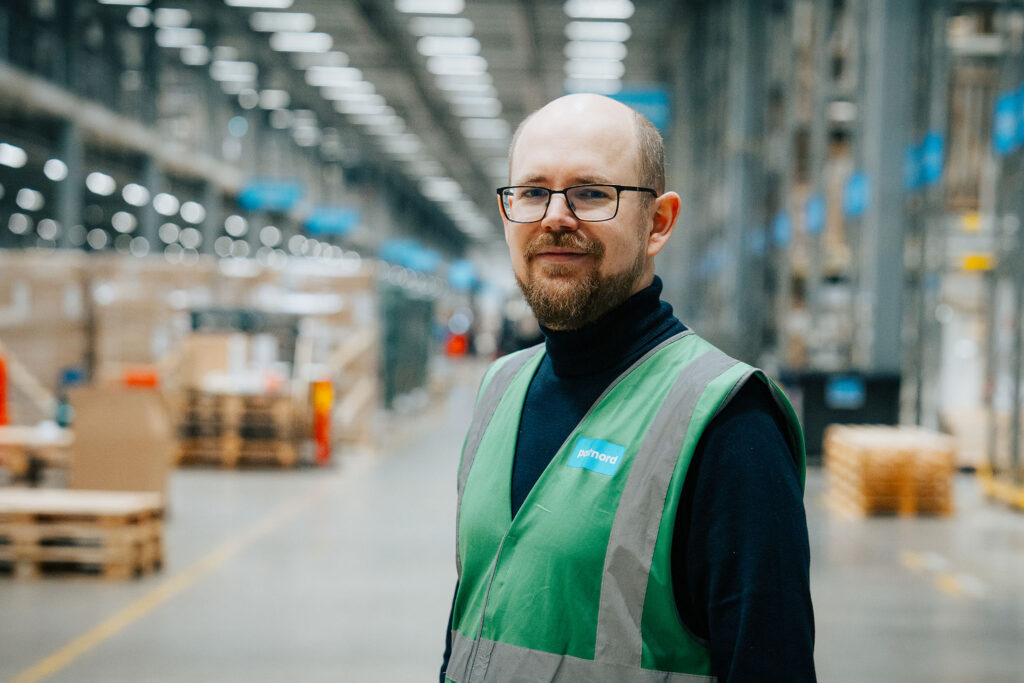
Currently, the waste-handling process contains two fractions: plastic and cardboard. The process consists of a few main functions. First, an operator calls for emptying a waste station by pressing a virtual button on a tablet. AGV system sends a request to an AGV to come to a waste station and pick up the waste. AGVs take the full container to the tipping station, emptying it into a compactor. After emptying, AGV delivers the empty container back to its original position and back to use.
“Automated waste transportation solution is a typical ‘side benefit’ of adopting an AGV system. AGVs enable human resources to concentrate on value-adding tasks while automation accomplishes boring, repetitive, supporting tasks like taking away full waste containers. There are no limitations to how many different types of waste there are; each can have its dedicated destination. Similarly, the gitterbox transfers offer tireless and silent support to human staff members’ efficient picking operation,” says Pekka Paavilainen, Sales Manager of Warehousing and Logistics, Rocla AGV Solutions.
“The gitterboxes have replaced cardboard boxes, improving sustainability and increasing the ergonomics of our pickers. The primary benefit of automation is that our operators can focus on their main tasks. The automated waste flow makes it simple for the operators to sort the waste and continue picking,” Johannes Algotsson highlights.
“We are currently extending the system with more AGV-served waste containers and gitterbox positions.”
PostNord TPL automated waste management
